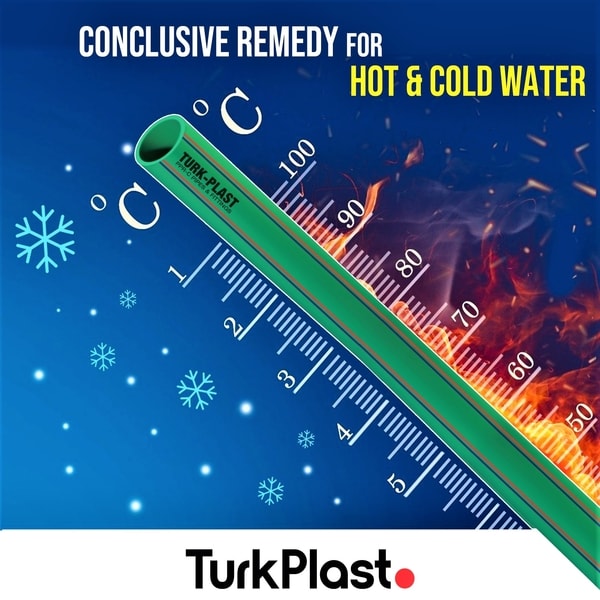PPR/PPRC pipe is known as polypropylene pipes, polypropylene random copolymer with a pipe by extrusion, injection moulding a tube. PPR pipe interface with hot-melt technology is completely integrated into the pipe together, so once installed, pressure tested and there will not be further leakage.
This does not mean there is no defect PPR/PPRC pipes, water pipes, heat resistance, low pressure, long-term working temperature should not exceed 70 °C; each piece of limited length and unable to bend should be used in the construction of a large number of joints; pipe fittings are inexpensive but relatively expensive. In terms of overall performance, PPR pipe is the most expensive pipe, water pipe, and transformation decoration material.

PPR pipe diameters from 16mm diameter to 160mm, home improvement is mainly used in 20mm, 25mm two (commonly known as 6 were in charge, one-inch tube), 4 of which used more in charge of some.
TURK PLAST PPRC Pipes & Fitting Properties
- Corrosion resistant.
- Fully Hygienic.
- Acid and alkali resistant.
- Operating pressure: 20 bar at 20 c and 10 bar at 95 C.
- No change in color and taste of water.
Turk Plast Pipes application properties
- Most suitable for hot and cold water supply system in houses, hotels, hospital and commercial buildings.
- TURKPLAST PPR-C pipes, which are made of polypropylene Random Copolymer (Type 3) are resistant to chemical substances.
- PPR-C pipes and fittings are manufactured in accordance with the standards of DIN 8077 & 8078 have long lifespan. They are the best choice for cold-hot fluid transfer and radiator installation as they have high resistance for high temperature and pressure.
- TURKPLAST PPR-C pipes and fittings are fit to the human health. They can be used in water facilities and food industry.
- TURKPLAST PPR-C pipes and fitting are manufactured in green color.

Precautions
- Protect pipes and fitting from hard impact.
- Don’t expose pies and fitting to UV-Radiation for a long period.
- Don’t use metal tools to fit the brass fittings.
- Don’t apply pipe with flames to obtain any bents or crossovers but using hot air with 140 C.
- Don’t use the hemp to fit the brass fittings.
Guidelines


